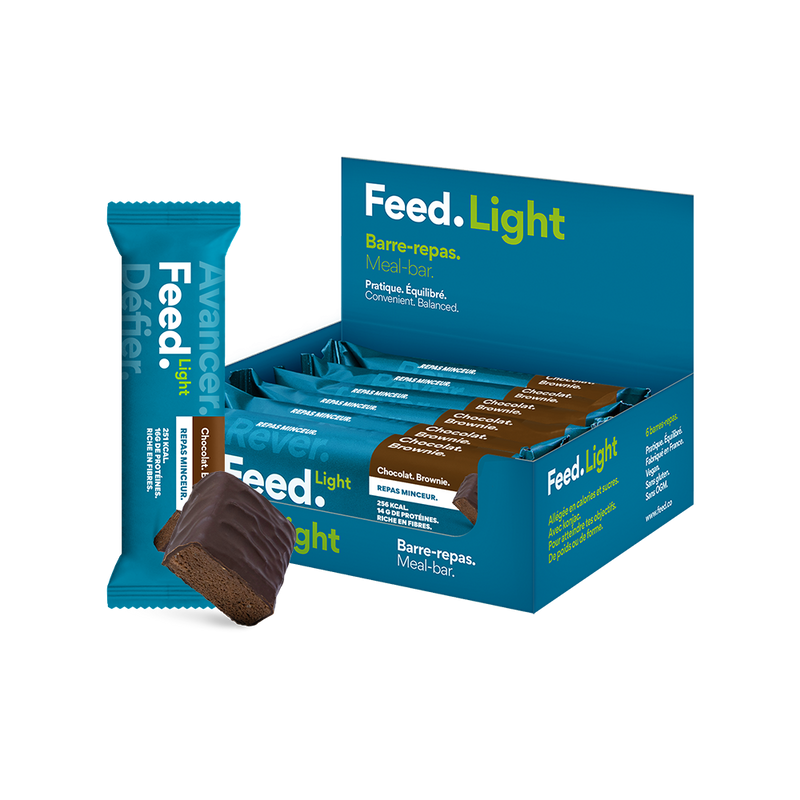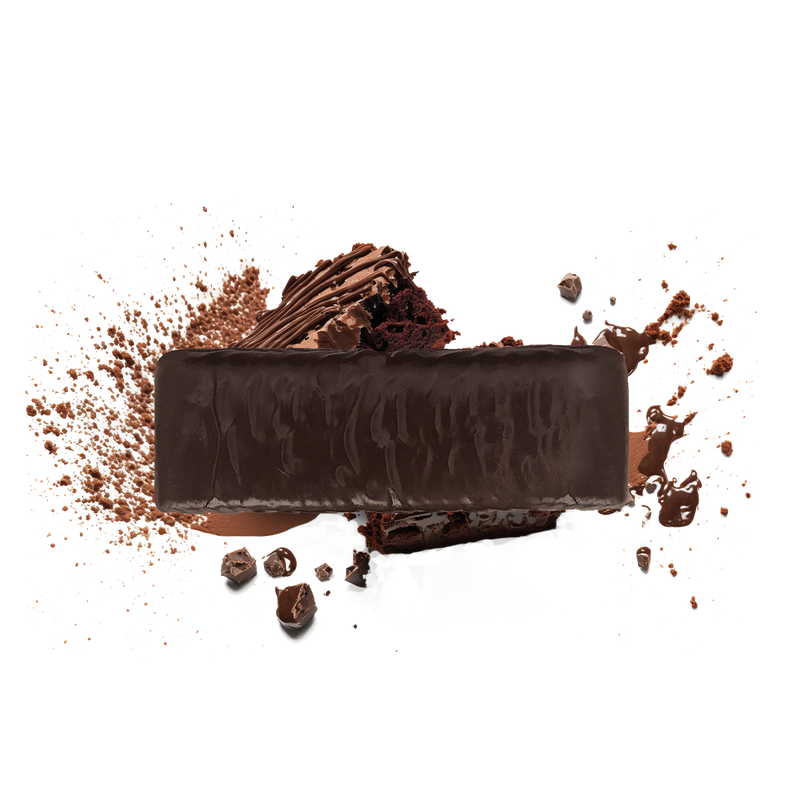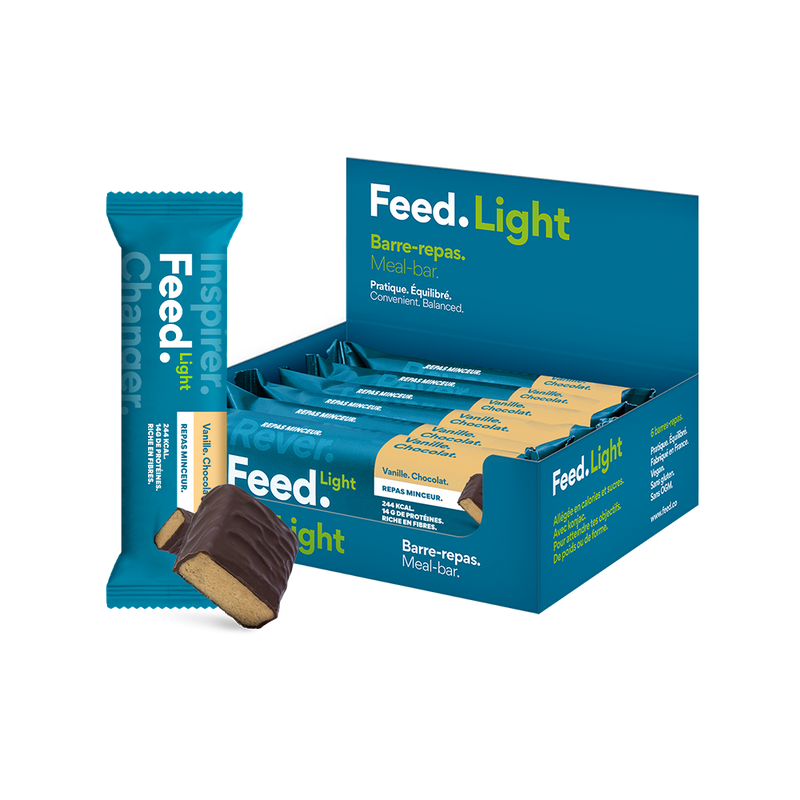Dietary rebalancing is an approach to nutrition focused on reorganizing and modifying your diet and eating habits in order to find a healthy and balanced diet according to your body's needs. If you are looking for a method to improve your health and well-being or to lose weight by adopting a healthier diet, dietary rebalancing may be the solution you are looking for. In this article, we will explain what dietary rebalancing is, why it is important, where to start, and give you advice and tips for implementing it and regaining a healthy and balanced diet.
What is dietary rebalancing?
Dietary rebalancing involves re-evaluating your current diet and making changes to achieve a healthier and more balanced diet according to your needs. When rebalancing your diet, it is important to eliminate bad habits and replace them with good eating habits. There are several tips to help you begin your dietary rebalancing.
Before wanting to start a dietary rebalancing, you must understand that it is not a diet but above all a type of diet that combines with a healthy lifestyle. Dietary rebalancing then takes place over time and becomes much more than a diet, which, conversely, has a fixed duration and which often causes a yo-yo effect on our weight.
Why rebalance your diet?
A balanced diet is essential to maintain good health or to help you lose weight. A healthy diet can prevent many chronic diseases, such as heart disease, diabetes and certain types of cancer. Additionally, a balanced diet can help maintain a healthy weight, aid in weight loss, increase energy levels, improve sleep, and improve mood.
How to rebalance your diet?
Here are tips and tricks to start your dietary rebalancing and adopt a new diet.
Monitor calories and macronutrients
When you start a dietary rebalancing program, don't put pressure on yourself. It is much better to go gradually, but sustainably.
The first step in rebalancing your diet is to take stock of your current diet and opt for new, healthier eating habits. Take note of what you eat regularly, especially processed and overly sugary foods. Next, identify whole foods rich in macro- and micronutrients, such as vegetables, whole grains, nuts, seeds, and lean proteins, that you could add to your diet.
It's important to get all the essential macronutrients your body needs for good health and avoid deficiencies. You need to eat your protein, carbohydrate, and fat intake every day. Your plate should consist of 50% vegetables, 25% lean proteins and 25% whole grains. Spread your nutritional intake over 3 meals per day if you can.
Eat before shopping
The success of your dietary rebalancing begins on the supermarket shelves. Do your shopping after eating, to avoid compulsive purchases that you don't need.
Here is a list of foods that will fit perfectly into your new diet:
- fruits and vegetables (seasonal if possible);
- eggs, meat and fresh fish for animal proteins,
- Tofu, legumes (lentils, weights, broken weights...) for vegetable proteins;
- whole grain foods (brown rice, wholemeal pasta, wholemeal bread, whole grains, quinoa, chia seeds, etc.);
- dried fruits;
- cottage cheese or skyr.
- Good quality fats (olive oil, rapeseed oil, walnut oil, etc.)
It is in your interest to limit or eliminate the consumption of processed, fatty and sugary foods. This is the case, for example, for pastries, white bread, chips, sodas, alcohol and most ready-made meals. In fact, these foods are bad for your health and should therefore be avoided as much as possible when losing weight.
Finally, cook as much as possible and eliminate processed products. Making your own recipes is the best way to eat a balanced diet during a dietary rebalancing. You can find many recipes on the internet. There are recipes that can be simple and quick.
Eat more vegetables
Fruits and vegetables are the preferred foods in diets. In fact, they are filled with water. They are therefore very low in calories. Also, they are very good sources of fiber, promoting digestion and reducing cardiovascular diseases. They are a significant source of vitamins and minerals, essential for the proper functioning of the body.
So don't forget to consume at least 2 or 3 portions of vegetables per day and 1 or 2 fruits (fruit juice should be avoided because it contains few nutrients and a lot of sugars).
Eat healthy snacks
As part of rebalancing your diet, you will need to be careful about what you snack on. Snacking on foods that are too sweet or fatty can cause slow weight gain in specific areas of your body. As soon as hunger strikes, having one of our healthy snacks, or having a healthy snack based on fruits or oilseeds such as almonds, walnuts or hazelnuts is a much better solution to avoid storing extra pounds . This way you can easily wait for the next meal.
Watch portions
It is also important to monitor your portion size when rebalancing your diet. Most people eat more than the recommended amount. Use smaller plates or bowls to reduce your portion size.
Drink enough water
Water represents approximately 60% of our body. Water enables numerous chemical reactions within cells, respiration, tissue drainage, and the evacuation of waste. Dehydration can notably cause a reduction in physical and mental abilities, headaches, kidney and digestive problems. On average, you should drink 1.5 liters of water per day.
Do regular physical activity
To support your dietary rebalancing, sport should be integrated into your daily life. Adopting regular sporting activity has many benefits for your health: increased basic metabolism, reduced stress, increased overall physical abilities, better heart health, improved immune system, weight loss, etc.
If you are not used to it, gradually increase your level of physical activity over the weeks and months, start by walking a little more each day for example and increase your overall activity with everyday activities (housework, gardening, DIY, etc.). dance). Try new activities and find the sport that suits you. This is a very important concept: love what you do so that sport is not a constraint.
Food rebalancing typical menu
Here is an example of a menu to help you eat better during your dietary rebalancing. The quantities must be adapted according to what your body needs each day.
Breakfast
- Whole grains (oatmeal, whole grain bread),
- Eggs or a skyr dairy product, cottage cheese, etc. for proteins,
- Fruit (apple or lemon squeezed in water),
- A hot drink (green tea or coffee)
Lunch
- A cucumber and tomato salad as a starter,
- Grilled lean meat or grilled tofu and fresh green beans, seasoned with Provence herbs and a little salt for the dish,
- Dessert is not obligatory, do you want something sweet? Take a compote without added sugar or a fresh fruit. You can allow yourself a square of 70% or 85% dark chocolate from time to time for your lunch.
Dinner
- Choose a light dinner to facilitate digestion before sleep.
- A lettuce salad with baked fish and mashed sweet potatoes.
- Yogurt or fruit for dessert.
Other tips
Eating slowly helps quell hunger more quickly. When you eat, satiety occurs after 20 minutes. By taking your time, you will notice that your hunger will quickly be satisfied by the foods you have already eaten.
Ask for the advice of a nutritionist to help you rebalance your diet.
Do you need help with your weight loss and dietary rebalancing and you don't have enough time to eat healthy and balanced at every meal? So our slimming program is a solution for rebalancing your diet and losing weight.
Replace 2 meals of your day with 2 slimming meals of your treatment. So, you only have one meal a day left to prepare yourself. Our slimming meals are rich in protein and fiber, and are balanced in macro and micronutrients.
In summary.
Rebalancing your diet is a healthy approach to improving your diet and your health by finding a balanced diet. A dietary rebalance allows you to re-evaluate your current diet and habits, identify nutrient-dense foods you can add, monitor your portion sizes and focus on the overall balance of your diet. A dietary rebalance allows you to find a balanced and healthy diet which will help you take care of your health in the long term. This new diet can also help you lose weight and regain your healthy weight.






















